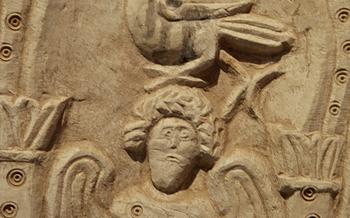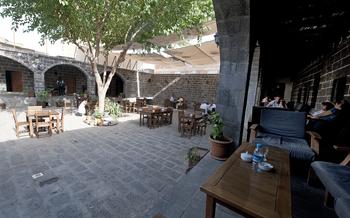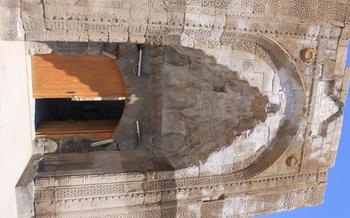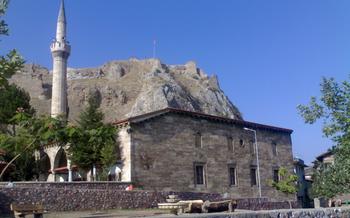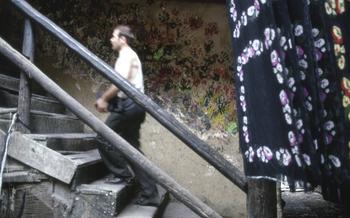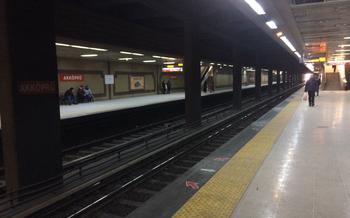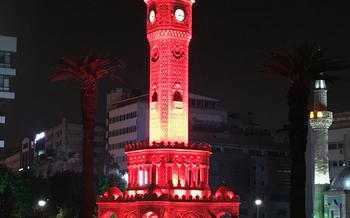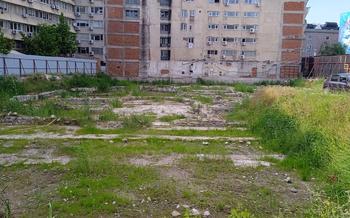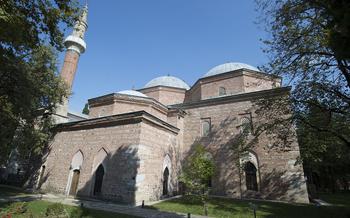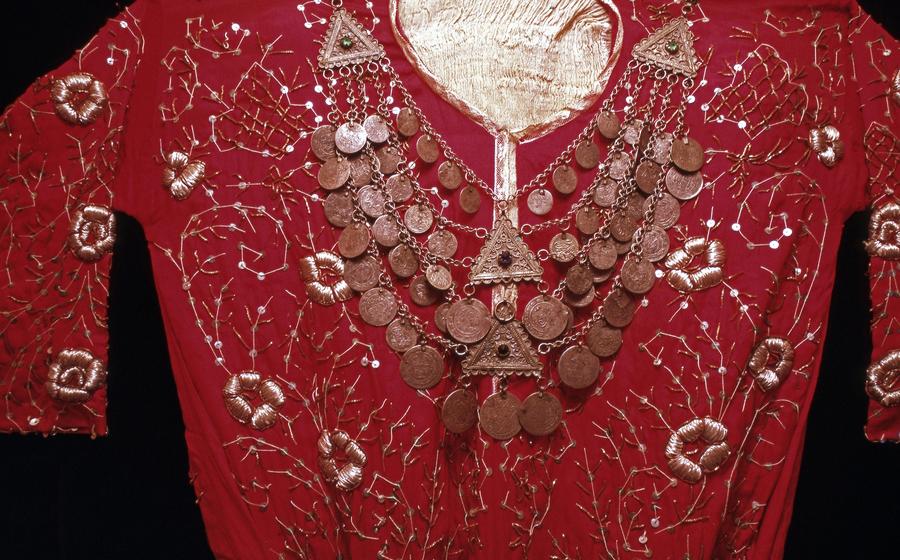
Tokat's Ethnography Museum
- Tokat's Ethnography Museum: A Journey Through History and Culture
- Location and Accessibility
- Exploring the Museum's Exhibits
- Traditional Crafts and Handicrafts
- Cultural and Historical Context
- Textiles and Costumes
- Metalworking and Jewelry
- Woodworking and Carpentry
- Leatherworking and Accessories
- Gastronomy and Cuisine
- Temporary Exhibitions and Events
- Educational Programs and Workshops
- Accessibility and Inclusivity
- Insider Tip: Hidden Gems
Tokat's Ethnography Museum: A Journey Through History and Culture
Tokat's Ethnography Museum stands as a testament to the rich history and diverse culture of this Anatolian city. Housed in a beautifully preserved historical building, the museum takes visitors on a journey through time, showcasing a remarkable collection of artifacts, textiles, and handicrafts that tell the story of Tokat's past and present.
The museum's architectural heritage is a sight to behold, with its intricate stonework, wooden balconies, and traditional Turkish motifs adorning its facade. Inside, visitors are greeted by a treasure trove of artifacts, ranging from ancient pottery and jewelry to elaborately embroidered textiles and traditional costumes. These exhibits provide a glimpse into the lives, traditions, and craftsmanship of the people who have called Tokat home throughout the centuries.
The cultural significance of the Tokat Ethnography Museum lies in its role as a guardian of the city's unique identity. By preserving and showcasing these precious artifacts, the museum plays a vital role in promoting cultural awareness and fostering a sense of pride among the local community. Visitors to the museum will leave with a deeper understanding of Tokat's rich historical tapestry and the enduring spirit of its people.
Location and Accessibility
The Tokat Ethnography Museum is conveniently situated in the heart of the city, at the following address: [Insert Exact Address]. Visitors can easily reach the museum using various transportation options. Public transportation routes, including buses and trams, have stops within walking distance of the museum. For those arriving by car, there are ample parking facilities available nearby. The museum's operating hours are from 9 am to 5 pm, Tuesday through Sunday. Please note that the museum may have seasonal variations in its hours, so it is advisable to check their website or contact them directly for the most up-to-date information. Admission fees are minimal and there are concessions or discounts available for students, seniors, and families.
Exploring the Museum's Exhibits
Tokat's Ethnography Museum offers a captivating journey through the region's rich cultural heritage, showcasing diverse artifacts and exhibits in its thematic galleries. Visitors can wander through sections dedicated to traditional costumes, textiles, pottery, metalwork, woodworking, leatherworking, and more. Each gallery presents a unique perspective on Tokat's cultural traditions and craftsmanship.
Highlights of the museum's collection include intricate embroidery and woven fabrics, exquisite silver and gold jewelry, finely carved wooden furniture, and decorative objects showcasing traditional motifs and patterns. Interactive elements, such as multimedia presentations and hands-on activities, enhance the visitor experience, providing deeper insights into the cultural significance of the artifacts.
Guided tours are available for a more comprehensive exploration of the museum's treasures. Visitors can choose from various languages and book their tours in advance to ensure a personalized and informative experience. The knowledgeable guides will lead visitors through the different galleries, sharing stories, historical context, and insights into the cultural practices and beliefs that shaped Tokat's rich heritage.
Traditional Crafts and Handicrafts
Tokat's cultural heritage is deeply intertwined with traditional crafts and handicrafts that have been passed down through generations. The Tokat Ethnography Museum proudly showcases a diverse collection of these exquisite creations, offering visitors a glimpse into the region's rich artistic traditions.
Among the highlights of the museum's collection are intricately designed pottery, handwoven textiles, and metalwork pieces. Visitors can admire the delicate patterns and vibrant colors that adorn these handcrafted items, each telling a unique story about the skill and artistry of Tokat's artisans.
The museum also features interactive exhibits that allow visitors to learn about the techniques and processes involved in creating these beautiful objects. Workshops and demonstrations are occasionally organized, providing visitors with a hands-on opportunity to engage with traditional crafts and even try their hand at creating their own masterpieces.
Visitors to the museum can not only appreciate the beauty of these traditional crafts but also purchase unique handmade souvenirs to cherish as a reminder of their visit to Tokat. Whether it's a finely crafted ceramic piece, a colorful woven rug, or a piece of exquisite jewelry, these souvenirs serve as a testament to the enduring legacy of Tokat's artisanship.
Cultural and Historical Context
Tokat's Ethnography Museum offers a glimpse into the rich cultural and historical tapestry of the region. The exhibits showcase the diverse influences that have shaped Tokat's culture, from the ancient Silk Road to the Ottoman Empire. Visitors can explore the local traditions, customs, and beliefs that are reflected in the artifacts and displays. Storytelling and legends associated with the artifacts add a personal touch to the museum experience, allowing visitors to connect with the history and heritage of Tokat on a deeper level. Interactive displays provide an engaging and immersive way to learn about the cultural context of the exhibits, making the museum a valuable resource for understanding the region's past and present.
Textiles and Costumes
The Tokat Ethnography Museum houses a remarkable collection of traditional clothing and textiles that offer a glimpse into the region's rich cultural heritage. Visitors can explore the diverse range of garments worn by the people of Tokat, from everyday attire to elaborate ceremonial costumes. The museum showcases intricate embroidery, delicate lacework, and vibrant colors, reflecting the skill and artistry of local artisans.
The traditional clothing of Tokat is characterized by its unique styles and fabrics. Women's dresses, known as "entari," feature flowing skirts and fitted bodices adorned with intricate embroidery and colorful patterns. Men's attire includes loose-fitting trousers, shirts, and vests, often made from durable fabrics like wool or cotton. Headwear plays a significant role, with women wearing headscarves or embroidered caps, and men sporting traditional felt hats or turbans.
Beyond clothing, the museum also displays an array of textiles used in everyday life. Visitors can admire exquisitely woven carpets, decorative rugs, and embroidered curtains, each showcasing the exceptional craftsmanship of Tokat's artisans. These textiles not only serve a functional purpose but also hold cultural significance, reflecting the region's rich heritage and traditions.
Metalworking and Jewelry
Tokat's artisans have long been renowned for their intricate metalworking and jewelry-making skills, which have been passed down through generations. The museum showcases a stunning collection of silver and gold jewelry, each piece meticulously handcrafted with intricate designs and motifs inspired by local culture and history. Visitors can admire the delicate filigree work and enamel embellishments that adorn necklaces, bracelets, earrings, and other ornaments, demonstrating the exceptional artistry of Tokat's metalworkers. The museum also provides insights into the traditional techniques and processes involved in creating these exquisite pieces, highlighting the skill and dedication of the artisans who have preserved this rich craft.
Woodworking and Carpentry
Tokat's woodworking and carpentry traditions are renowned for their intricate carving techniques and craftsmanship. The museum showcases a diverse collection of beautifully carved furniture, decorative objects, and architectural elements. Visitors can admire the intricate geometric patterns, floral motifs, and calligraphy that adorn these wooden masterpieces. The exhibits provide insights into the historical significance of woodworking in Tokat, highlighting its role in everyday life and architecture. From elaborately carved doors and window frames to finely crafted furniture and decorative pieces, the museum's collection offers a glimpse into the skill and artistry of Tokat's woodworkers.
Leatherworking and Accessories
Tokat's leatherworking tradition is renowned for its exquisite craftsmanship and unique designs. Artisans in the region employ traditional techniques such as tanning, dyeing, and embossing to create a range of leather goods, including footwear, bags, and accessories. The intricate stitching and embossing on these items showcase the skill and creativity of local artisans. Visitors to the Tokat Ethnography Museum can admire a collection of these finely crafted leather goods, which not only serve a functional purpose but also possess significant aesthetic value. The museum provides insights into the historical significance of leatherworking in Tokat and its role in the region's cultural heritage. Whether for everyday use or special occasions, Tokat's leather goods are a testament to the region's rich craftsmanship and artistic expression.
Gastronomy and Cuisine
Tokat's cuisine is a delightful blend of flavors, textures, and aromas, showcasing the region's rich culinary heritage. Visitors to the Ethnography Museum can immerse themselves in the local gastronomy through various exhibits, demonstrations, and recommendations. Discover the secrets behind beloved dishes like Tokat kebabı, a tender and flavorful lamb dish cooked over an open fire. Explore the use of local ingredients, such as fresh vegetables, herbs, and spices, that give Tokat's cuisine its distinctive character. Don't miss the opportunity to participate in cooking demonstrations or workshops, where you can learn to prepare traditional recipes and savor the authentic tastes of Tokat. To enhance your culinary journey, venture into the charming cafes and restaurants near the museum, where you can indulge in a delightful meal accompanied by the warmth of Turkish hospitality.
Temporary Exhibitions and Events
Tokat's Ethnography Museum is not just limited to its permanent collection; it also hosts a variety of temporary exhibitions and events throughout the year. These special exhibitions often explore specific themes or topics related to Tokat's history, culture, or art. They provide visitors with an opportunity to delve deeper into specific aspects of the region's heritage and engage with new perspectives.
The museum collaborates with other institutions, artists, and organizations to create these temporary displays, resulting in unique and diverse exhibitions. Visitors can explore historical artifacts, contemporary art installations, or interactive multimedia presentations that shed light on various aspects of Tokat's rich cultural tapestry.
To stay updated on upcoming events and exhibitions, visitors can check the museum's website or social media platforms. These channels provide information on the themes, dates, and any special activities associated with each event. The museum's staff is also happy to answer inquiries and provide guidance to ensure that visitors make the most of their visit.
Educational Programs and Workshops
Tokat's Ethnography Museum is not just a repository of cultural artifacts; it also serves as an educational hub that fosters learning and engagement among visitors of all ages. The museum offers a range of educational programs and workshops designed to provide immersive and interactive experiences that complement the exhibits. These programs cater to diverse audiences, from students and families to the general public.
Visitors can participate in hands-on activities and workshops that allow them to engage directly with the museum's collections. These activities may include traditional crafts demonstrations, pottery workshops, or textile weaving sessions. By participating in these hands-on experiences, visitors gain a deeper understanding of the skills and techniques used by Tokat's artisans and craftsmen.
The museum also offers educational programs specifically tailored for school groups. These programs are designed to align with school curricula and provide students with an engaging and interactive learning experience. Through guided tours, interactive exhibits, and hands-on activities, students can explore Tokat's cultural heritage and gain insights into the region's history and traditions.
To ensure accessibility and inclusivity, the museum provides information on educational programs and workshops on its website. Visitors can find details on program schedules, fees, and booking procedures. Additionally, the museum staff is available to assist with reservations and answer any inquiries related to educational programs and workshops.
Accessibility and Inclusivity
Tokat's Ethnography Museum is committed to providing an accessible and inclusive environment for all visitors. The museum features ramps and elevators to ensure that all levels of the building are wheelchair accessible. Audio guides are available for the visually impaired, providing detailed descriptions of the exhibits and artifacts. The museum's signage is also multilingual, with translations in English, German, French, and Arabic.
For visitors with specific accessibility needs or inquiries, the museum's website provides a comprehensive accessibility statement outlining the measures taken to ensure a welcoming and inclusive experience. The museum staff is also trained to assist visitors with disabilities and provide any necessary support.
Additionally, the museum offers inclusive programming aimed at making the museum's collections and exhibits accessible to all audiences. Educational programs and workshops are designed to be inclusive and cater to diverse learning styles and abilities. The museum also collaborates with local organizations to develop programs that specifically target underserved or marginalized communities.
By prioritizing accessibility and inclusivity, Tokat's Ethnography Museum strives to create a welcoming and engaging environment for all visitors, ensuring that everyone has the opportunity to explore and learn from the museum's rich cultural heritage.
Insider Tip: Hidden Gems
Beyond the main exhibits, the Tokat Ethnography Museum holds hidden treasures that are waiting to be discovered. One such gem is the secret garden located behind the museum building. This tranquil oasis offers a serene escape from the hustle and bustle of the city, where visitors can relax amidst lush greenery and admire the intricate details of the museum's architecture from a different perspective.
Another hidden gem is the museum's collection of old photographs and postcards. These precious artifacts provide a glimpse into Tokat's past, showcasing the city's transformation over the years. Visitors can spend hours poring over these images, discovering forgotten stories and gaining a deeper appreciation for the city's rich history.
To uncover even more hidden gems, strike up a conversation with the museum staff. They are a treasure trove of knowledge and can provide insider tips on lesser-known exhibits, special events, or off-the-beaten-path experiences that most tourists miss. They can also recommend other cultural attractions and hidden gems in Tokat that align with your interests.
Remember, the best way to discover the true essence of a place is to ask the locals. Engage with the museum staff, shopkeepers, or friendly faces you meet on the street. They can offer invaluable recommendations and insights that will lead you to unforgettable experiences and create lasting memories of your visit to Tokat.
